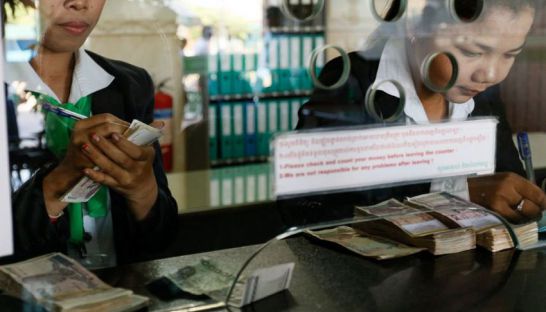Cambodia: Riel loan interest rates on par with dollar counterparts
Interest rates for microfinance loans issued in Cambodian riel have decreased to the same level as those given in US dollar, a change industry insiders claim is an upside for circulation of the local currency that is being driven in part by the 18 percent interest rate cap imposed by the central bank in April.
Hout Ieng Tong, chairman of the Cambodia Microfinance Association (CMA), said that the cap has caused riel loan interest rates to fall while in the past they were set at about 0.5 percent higher than the US dollar.
“The gap between interest rates for loans made in riel and in US dollar is now closed,” he said, adding that measures taken by the National Bank of Cambodia (NBC) such as providing negotiable certificates of deposit and liquidity-providing collateralised operations (LPCOs) have also helped stabilise the rates. “These [tools] help us obtain funds in riel at a cheaper cost, and they allow us to offer a lower interest rate for our local currency. We hope this will encourage our clients to take out loans in riel.”
Sok Voeun, CEO of LOLC Cambodia, said as previous loan periods expire and new loans are given that adhere to the 18 percent interest rate cap, microfinance institutions (MFIs), especially those at the lower end of the lending spectrum, are increasingly issuing riel.
“In the past, if a client took out a loan for 5 million riel, or about $1,250, the interest rate would be 2.3 percent per month for the riel-based loan, but would be only 1.8 percent per month for the dollar-based loan,” he said. “Now, interest rates for riel are much better in comparison to the past, so that helps clients strengthen their repayment ability.”
As of the end of last month, LOLC Cambodia had an outstanding loan portfolio of $282 million, with 28 percent provided in riel.
Voeun was optimistic that more loans would be given in riel as the NBC’s prakas mandating that all lenders hold 10 percent of their loan portfolio in the local currency comes into effect by the end of 2019.
“I believe that the cost of funds in riel will continue to decline, as all commercial banks comply with the NBC’s regulations,” he said. “There are commercial banks which have not provided any loans in riel up till now, so if they are going to comply, they need to provide loans to MFIs at cheaper interest rates.”
Source: http://www.phnompenhpost.com/business/riel-loan-interest-rates-par-dollar-counterparts


 Thailand
Thailand




